The scales that guard the springs
One mermaid’s journey toward environmental preservation
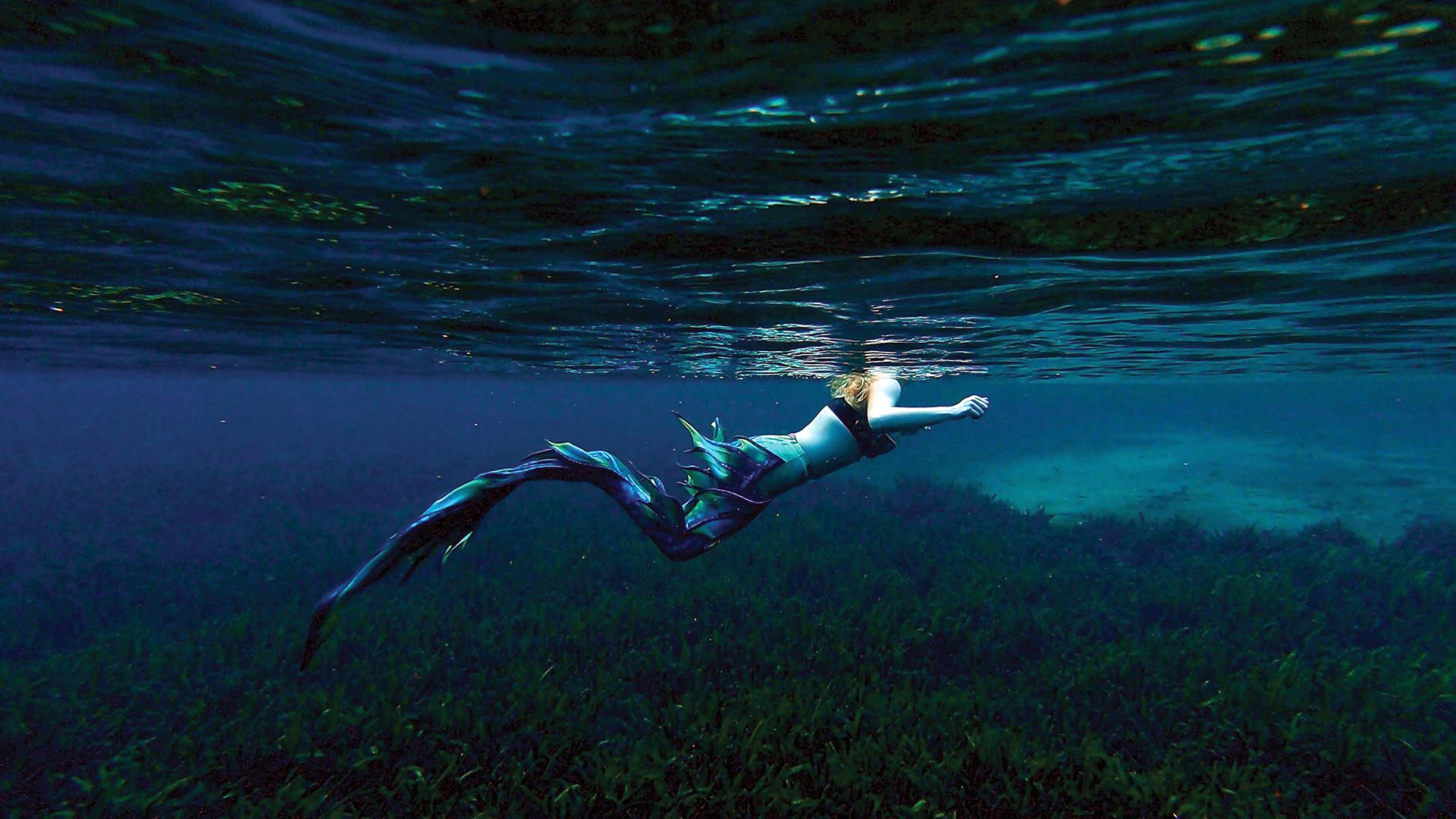
January 22, 2025 | story by Kylie Williams | photos by Kat Tran
This story is from Atrium’s Winter 2024 magazine, which released December 2024.
Beneath the crystal-clear water of Alexander Springs, the edge of a fin flits among rippling eelgrass and tiny minnows. Warm Florida sunlight beams through the surface, illuminating beaded jewelry, blond hair and a mermaid tail the same blue-green as the water.
Swimmers and sunbathers stare and whisper among themselves at the wonder in the spring. One woman snaps pictures on her phone, and a young boy cranes his neck to peek over the plastic inner tube he’s floating on.
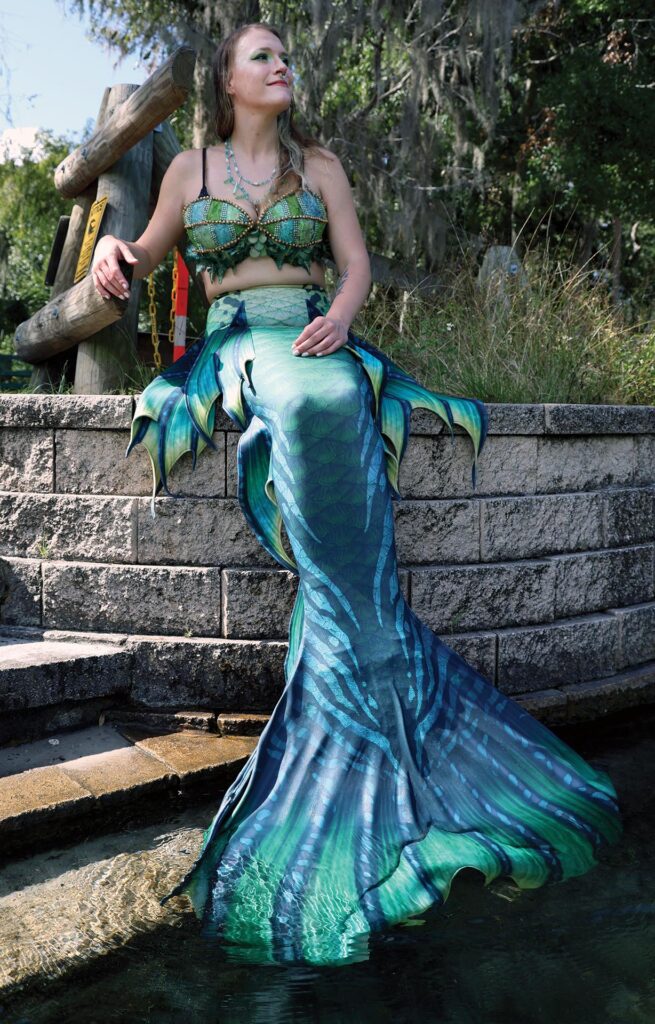
The mermaid surfaces with a splash of their tail and a friendly smile, seemingly unbothered by the many pairs of eyes glued to their movements. As a professional performer, Lilly Stark is used to a little attention.
Under their “mer-sona” as the Key Lime Mermaid, Stark, 28, is often found working Pensacola resort pools and beach sandbars. But each month, they also voluntarily swim at state springs to encourage tourists and Florida locals to protect the imperiled ecosystems. While most environmental activists aren’t donning a shell bra and a 30-pound tail, Stark’s method of story-driven education has proved successful.
With the onlookers under their thrall, Stark’s real work begins. They swim among people in the water and call out to observers on shore, ensuring the audience is respecting nearby wildlife, disposing of trash correctly and wearing environmentally safe sunscreen. They keep their words lighthearted and whimsical, making jokes and splashing spectators.
“This spring here is really clear and nice,” Stark says. “I bet you guys are helping take care of the springs.”
Stark put on their first mermaid tail — pre-owned and rainbow-patterned — during the COVID-19 pandemic. They were using the extra time afforded by lockdown to explore Florida’s springs and pursue their lifelong hobby of freediving when they discovered that some divers dressed up as mermaids.
“I was hooked ever since then,” they said.
During pool shows, the Key Lime Mermaid is an entertainer, decked out in glittery makeup and gaudy wigs. But at the springs, their usual caliber of flamboyance is diminished; about a year into mermaiding, Stark realized that excess glitter sheds into the water, every strand of artificial hair or painted scale a piece of microplastic. Now, it’s important to Stark that everything they wear in the springs, from their emerald eyeshadow down to the adhesive holding their mermaid bra together, is environmentally friendly.
Swimming at the springs doesn’t feel like work to Stark. It’s free from the pressure of entertaining and full of the joy that comes from teaching people about the environment they love — the environment that’s in danger.
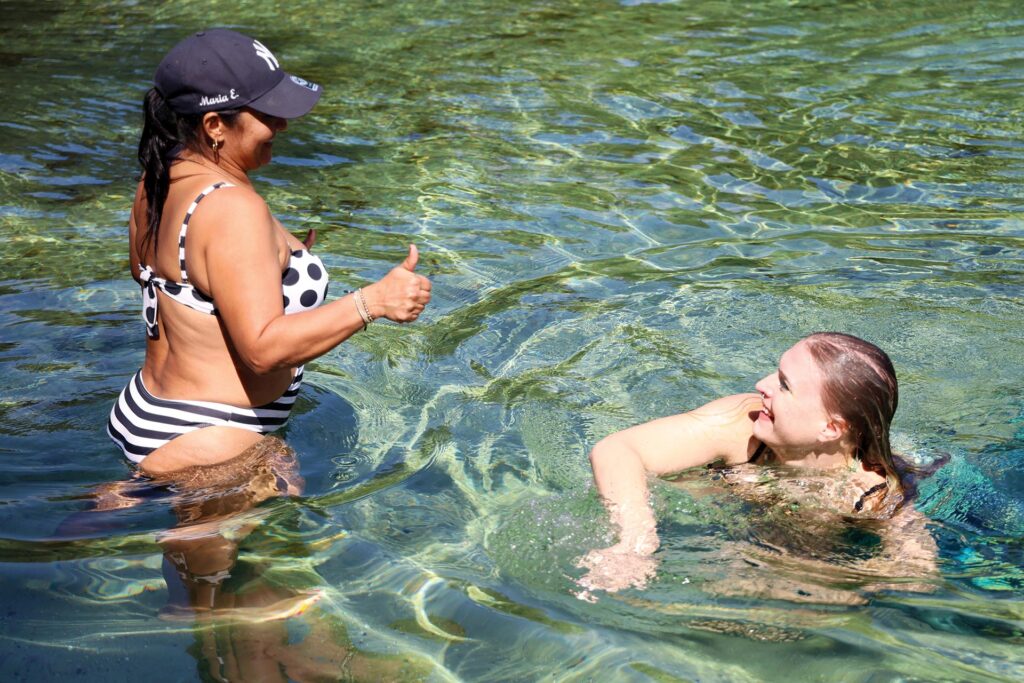
Many of Florida’s springs have been overpumped for agriculture and commercial water-bottling, leaving their water levels dangerously low. Infestations of algae blooms from excess nutrient pollution cloud the water and suffocate native wildlife. Even Alexander, a pool in the heart of Ocala National Forest, still shows signs of human-driven damage, despite it being one of the few springs that isn’t considered impaired.
The entrance to the water, once a carpet of lily pads and grass, is now muddy. The eelgrass gently swaying at the spring bottom has been partially slashed by swimmers and divers.
At first, Stark was frustrated that people were uneducated about the springs and contributed to their degradation. But they noticed people in what they call the “tourist mindset” didn’t always respond well to state park employees or officials telling them what not to do. So, instead, Stark took on the role of a friendly educator.
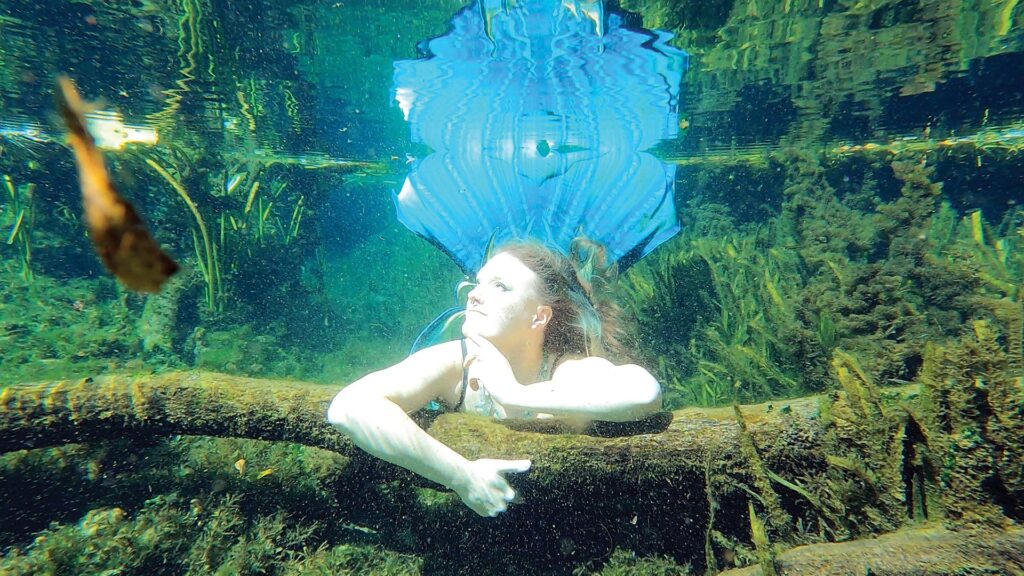
They swim with springs visitors, showing them hidden caves and native wildlife. They tell stories and pose for photos, enthusiastically chattering about their love of the springs. And they notice obstinate tourists listen a little bit longer to the Key Lime Mermaid than they would to an official, pausing to consider their harmful behaviors.
“Usually there’s a big divide between local people in Florida and the tourist,” Stark said. “Having the tail on can kind of bridge that gap.”
Part of Stark’s enthusiasm for Florida’s ecosystems stems from their tree-hugging childhood. They grew up in Nome, North Dakota, population 50. In a town with more dogs than people, Stark had few opportunities to connect with nature and spent a lot of time shoveling snow, less-than-ideal options for someone who hates the cold.
As a child, Stark refused to leave their mountain of blankets on frigid mornings unless their mom first warmed their clothes over the radiator. They would excitedly wait for the day North Dakota’s short summers kicked in — the day it would hit 70 degrees, when they could swim with their dad.
Stark’s dad, Tim Stark, was a railroad conductor who spent most of his time working. But on the rare summer days he was home, he taught Stark to free-dive.
In the above-ground pool, the pair would take a deep breath of cool air, then let their lungs deflate as their bodies relaxed. The cold water enveloped them, sinking four feet down to the bottom. Tim made funny faces at Lilly, imitating the Creature from the Black Lagoon while Lilly giggled in a stream of bubbles. They played underwater rock-paper-scissors; their lungs began to ache.
When they couldn’t hold their breath any longer, they pushed up hard from the bottom of the pool, erupting above the surface. Then they’d do the whole thing again and again.
Stark swims down to the bottom of the water now, flipping their tail over to stare at the surface. The sun leaves a glinting, translucent reflection on the spring, creating a mosaic of stained glass. A sense of serenity falls over Stark in these moments, when there’s nothing to focus on but their own held breath.
After spending a decade in Florida, Stark’s awe for the state’s natural environments has only grown. They fear humans have encroached too far into the springs, but throwing on a tail and educating people about the treasured waters is how they’ve discovered they can make a difference.
“I feel like every time you put on a tail,” Stark said, “it’s your responsibility to help conserve these environments that we want to go in and enjoy and feel beautiful in.”
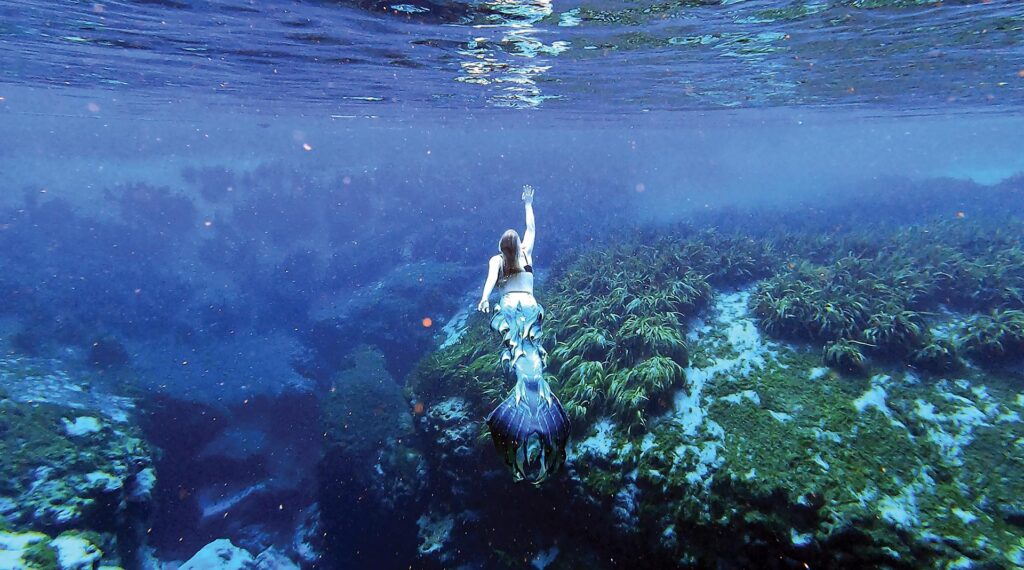
After swimming for hours in Alexander Springs, Stark’s lips turn blue. Goosebumps erupt over their arms. It’s time to go home. On the bank, they peel off their water-logged tail, shivering in purple leggings and eyeliner that’s somehow still perfectly intact.
As they pack their tail into a blue foldable cart, Stark perks up when they overhear a park ranger talking to another visitor about a nearby spring they haven’t heard of. The Key Lime Mermaid, tailless, walks over with a smile, already searching for their next adventure.